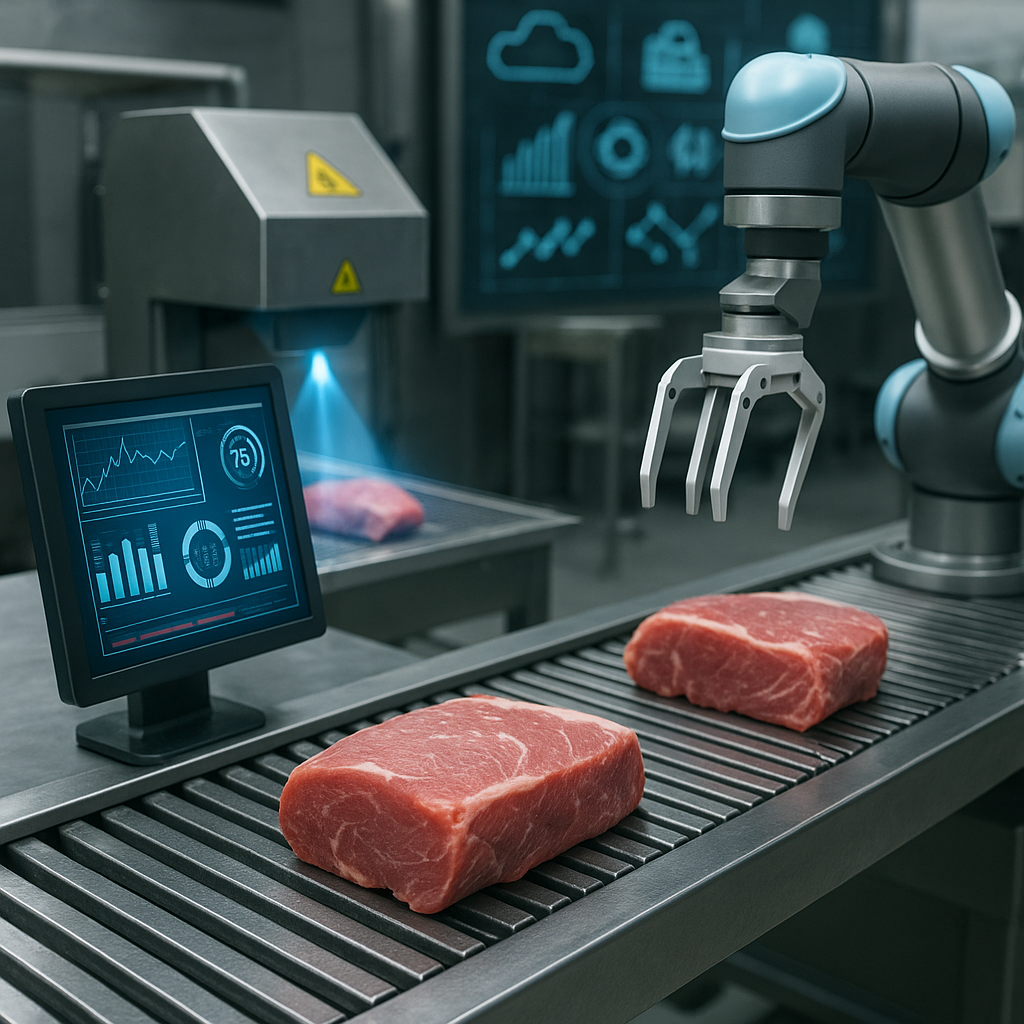Meat industrialization enters smart age with AI, blockchain and bioprinting
On the digital side, AI and big data are driving process optimization. AI agents are now embedded into supply chain management, enabling real-time adjustments to production plans, quality control, and logistics. The paper reports that early adopters of AI-driven S2B2C (Supplier to Business to Consumer) models have recorded efficiency gains of nearly 27% across operations. In tandem, IoT-based cold chain monitoring systems use sensor arrays to maintain optimal storage conditions, minimizing spoilage risks from temperature fluctuations during transport.

A new review study reveals that artificial intelligence, smart logistics, and next-generation processing tools are revolutionizing meat industrialization, delivering major gains in food safety, production efficiency, and product customization. The research, titled “Innovative Technologies Reshaping Meat Industrialization: Challenges and Opportunities in the Intelligent Era,” was published in the journal Foods.
The study offers an in-depth analysis of how physical, digital, and biological technologies are transforming every stage of meat production, from slaughter and sterilization to storage and personalization, while exposing persistent hurdles around scalability, standardization, and public acceptance. It synthesizes technological advances across the meat industry’s supply chain.
The study highlights how physical techniques like high-pressure processing, ultrasound-assisted marination, and precision cutting are now integrated with artificial intelligence, Internet of Things (IoT), blockchain, and 3D bioprinting. This fusion is advancing the meat sector into the intelligent manufacturing age, but its large-scale implementation remains constrained by high costs, a lack of unified standards, and consumer skepticism.
How are emerging technologies changing meat production?
The paper outlines the integration of Fourth Industrial Revolution technologies into the meat sector, which is experiencing a shift from mechanical and automated systems to intelligent and digital processes. In particular, physical innovations have pushed processing precision and safety to new levels. For example, pulse electric field (PEF) sterilization can now exceed 90% effectiveness, significantly enhancing microbial safety without degrading meat quality. Meanwhile, ultrasonic-assisted marination cuts preparation time by up to 12 hours, while ultra-high-pressure (UHP) processing extends shelf life without chemical preservatives.
Smart cutting tools guided by sensors and AI now allow processors to achieve millimeter-level precision, reducing waste and increasing yield. This level of detail not only improves portion control but also ensures consistency in automated production lines, an essential step toward intelligent central kitchens.
On the digital side, AI and big data are driving process optimization. AI agents are now embedded into supply chain management, enabling real-time adjustments to production plans, quality control, and logistics. The paper reports that early adopters of AI-driven S2B2C (Supplier to Business to Consumer) models have recorded efficiency gains of nearly 27% across operations. In tandem, IoT-based cold chain monitoring systems use sensor arrays to maintain optimal storage conditions, minimizing spoilage risks from temperature fluctuations during transport.
Blockchain is also emerging as a critical layer for traceability. When integrated with IoT, it provides end-to-end transparency, from livestock origin and processing steps to final retail shelf, helping address safety recalls, counterfeit risks, and compliance audits in global meat trade.
What future innovations could disrupt traditional models?
In addition to enhancing current operations, the study explores the disruptive potential of future-forward innovations such as cell-cultured meat, 3D bioprinting, and personalized nutrition systems. These technologies could redefine meat production altogether by decoupling protein synthesis from livestock farming.
Cell-cultured meat, grown from animal cells in bioreactors, promises ethical and environmental benefits by avoiding slaughter and reducing greenhouse gas emissions. However, the paper notes that the technology remains in the pilot phase, hindered by prohibitive bioreactor costs and scaling challenges. For instance, producing just one kilogram of lab-grown meat can currently require thousands of dollars in inputs and equipment.
Meanwhile, 3D bioprinting has advanced to the point of creating customized meat textures and nutritional profiles. This opens possibilities for medical nutrition applications or on-demand culinary customization, such as printing meat products for specific age groups, health conditions, or taste preferences. Deep learning models help design the structures, while bioprinting hardware recreates complex fibrous compositions.
In centralized kitchen applications, companies are using AI-powered robotics to create high-precision meat preparations at scale, enhancing productivity and profitability. These smart kitchens are capable of integrating consumer feedback loops to adjust recipes in real time—potentially transforming the mass production of meat-based meals into a personalized service.
What barriers prevent large-scale adoption of smart meat technologies?
Despite promising gains, the study identifies three major bottlenecks preventing widespread deployment of these intelligent technologies: cost, standardization, and consumer perception.
High capital investment remains the largest hurdle. Whether it’s bioreactor systems for cultured meat or sensor-equipped logistics infrastructure, upfront costs far exceed those of traditional methods. Even non-thermal technologies like PEF and UHP require costly machinery and highly trained technicians, making them inaccessible to small and medium processors.
Standardization is another critical gap. The lack of unified operational benchmarks for non-thermal processing, smart sensor calibration, and AI decision models limits regulatory approval and international interoperability. Without clear standards, industry-wide trust and adoption will remain fragmented.
Consumer perception also plays a pivotal role. Surveys cited in the study show that approximately 41% of consumers are concerned about health risks associated with new meat technologies, especially cultured meat and bioprinted products. Misinformation, cultural taboos, and skepticism about “lab-grown” food remain strong, underscoring the need for transparent labeling, public education, and regulatory assurance.
The study recommends multi-stakeholder collaboration between government, academia, and industry to overcome these barriers. Public–private partnerships could fund demonstration projects, while international bodies could help harmonize standards and certifications. Enhanced consumer engagement strategies will also be key to ensuring market receptivity.
- FIRST PUBLISHED IN:
- Devdiscourse










